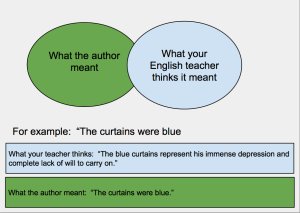
Tip 11: Make your characters believable
Give your character a quirk or something that makes them unique. Maybe she’s a chronic nail biter. Maybe he has a unibrow. Maybe a stutter or a limp will give them something that makes them memorable and believable.

Tip 12: Give your character a secret or something hidden in their past
Think of Batman. He is a superhero/vigilante because he saw his parents murdered when he was young (spoiler alert). Your character is motivated to do what he or she does by the experiences from their past
 Tip 13: Give your character a fault
Tip 13: Give your character a fault
Realism in a character comes with them wrestling with some sort of demon. Maybe they’re an alcoholic or a recovering drug addict. Maybe they secretly like to where diapers. Give them something that they are struggling with.

Tip 14: Spread out the details about your character
I know authors that make up very detailed character profiles. Every scar, mole and tic is described in great detail. This is a great tactic to get to know your character intimately, but don’t dump everything on your reader at once. Spread out these details and give them out during conversations or in little snippets throughout your story.

Tip 15: Give your character an obstacle (or more than one) to overcome in your story
This is what it’s all about. No one would want to read about Snow White if her stepmother loved her and she went right from a happy childhood to living happily ever after. The nature of writing fiction demands an obstacle or two in your story. Make them good and juicy.

Tip 16: Decide on the tone for your narrative
Whatever tone you choose whether it’s humorous, ominous, serious, or some other ‘ous’, stick with it throughout your book. There are exceptions to this. In Gone Girl, the author tells the story from two points of view with very different tones and does it well. If you’re doing on purpose, that’s one thing, but don’t change the tone of your writing with your mood.

Tip 17: What is the best narrative point of view?
Usually the choice is between first and third person. Third person gives you a bit more flexibility to be omniscient in your writing. First person, in my opinion is more difficult but can be very effective. The point here is to pick one point of view and stick with it. Be consistent.
 Tip 18: Pay attention to the pace
Tip 18: Pay attention to the pace
Don’t let your story move too slow or too fast. Look at it from the readers point of view. Are you being like Dean Koontz and spending four pages describing a tree? Keep your readers interested by keeping a steady pace that is not too slow or fast.
 Tip 19: Use the Three Act Structure
Tip 19: Use the Three Act Structure
Your story should have a beginning, middle and end. This structure has worked since the beginning of time. Make sure you can find the three acts.

Tip 20: Use symbols if they make sense, but be subtle
Do you remember in high school when you had to analyze books and find the symbolism. I always wondered if the authors really intended for certain things to be symbols. If you use them, and I do sometimes in my writing, don’t be blatantly obvious or it may seem like a cheap device.
If you want to check out tips 1-10, you can find them HERE.

This is interesting, informative, and entertaining. Thanks for the info.
LikeLiked by 1 person
You’re welcome. I’m glad you found it useful.
LikeLiked by 1 person
Thanks for these! Very helpful. And very big THANKS for liking all my #atozchallenge posts.
LikeLiked by 1 person
No problem. Thanks for stopping by and commenting.
LikeLike
Pingback: 10 Writing Tips – Part 4 – Don Massenzio's Blog
Pingback: Writing Tips – Part 4 – Don Massenzio's Blog
Pingback: Writing tips I liked.hope it will help you.keep going! – Lifeisgoodblog
Thanks for sharing this.
LikeLike